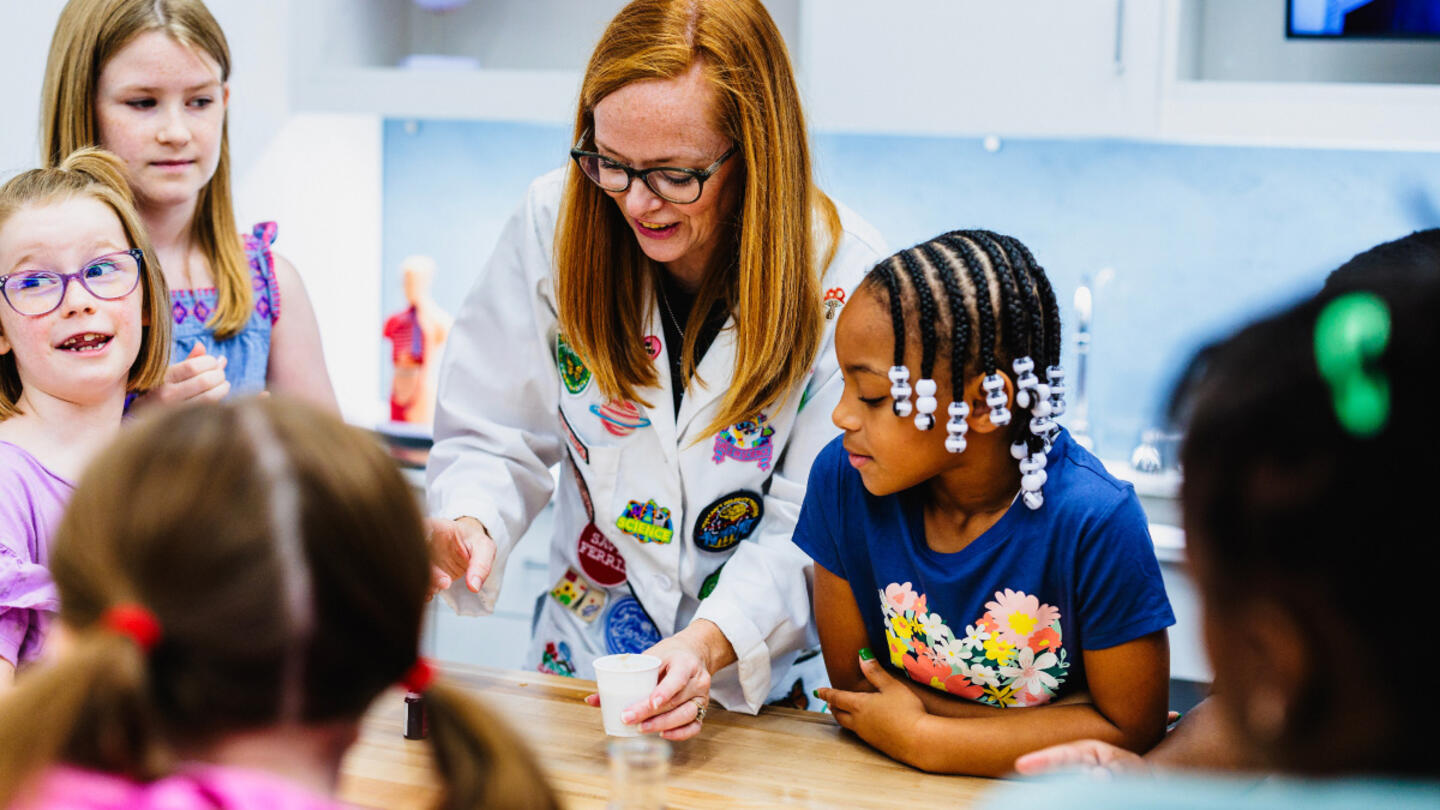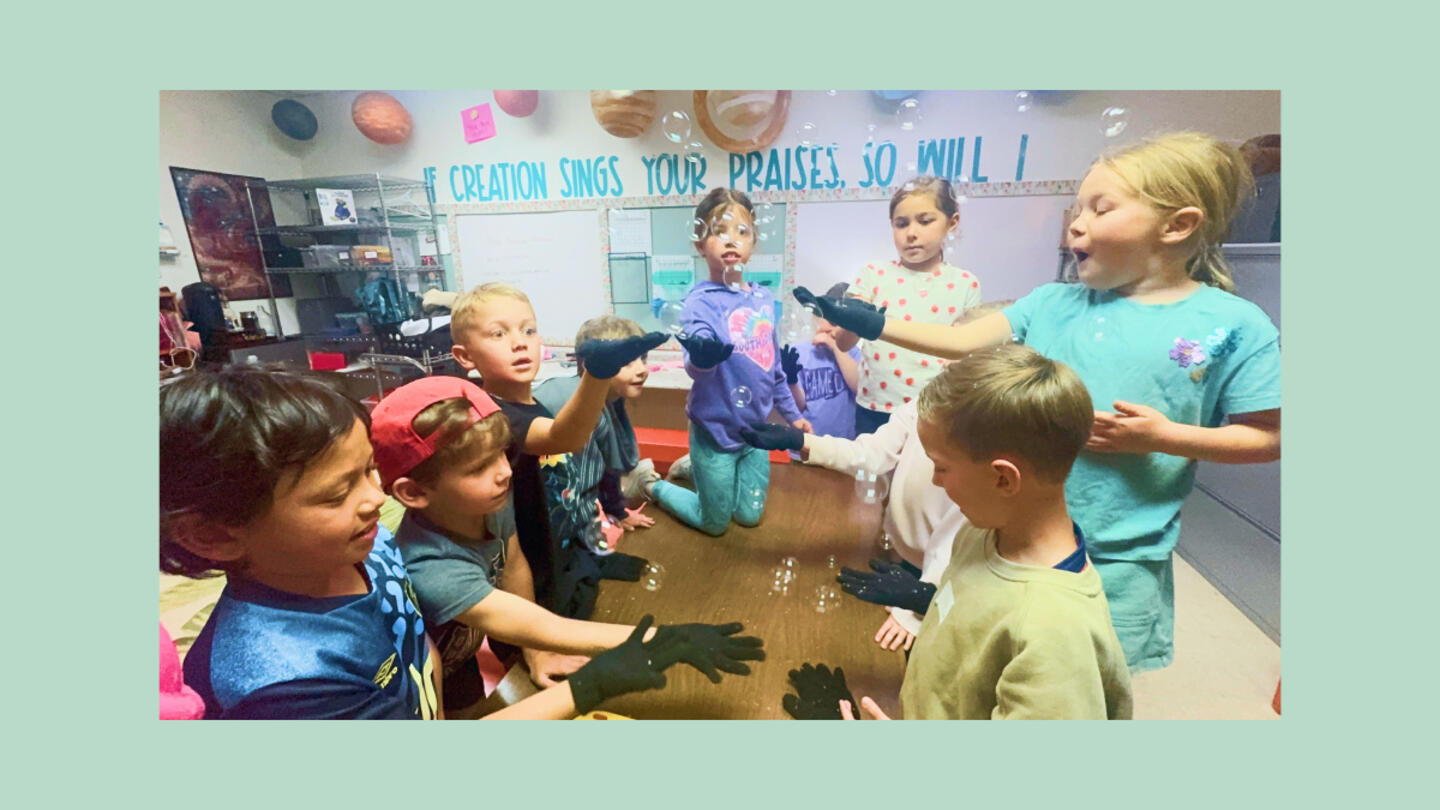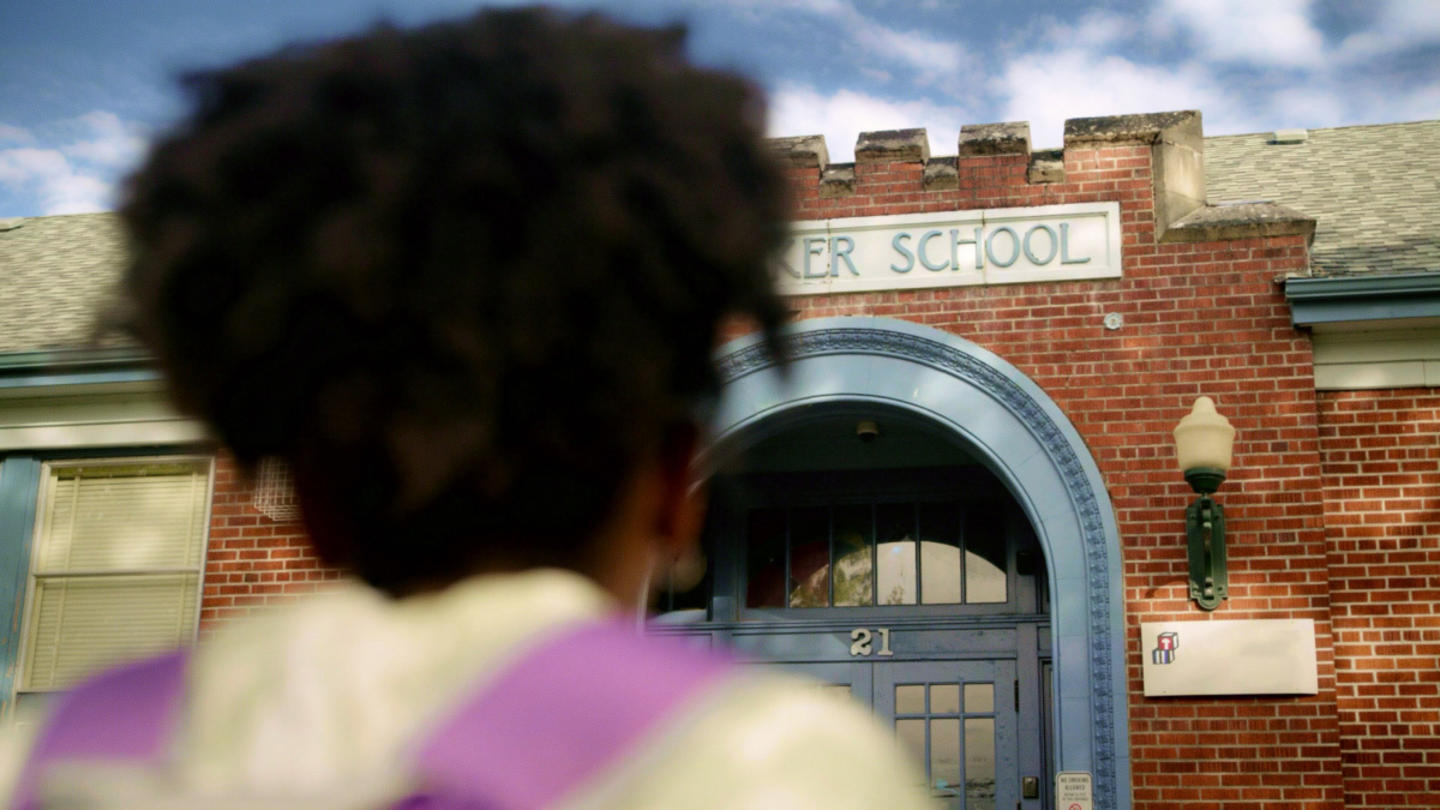Denisha Allen failed third grade — twice — because she couldn’t read.
“I was a student who was languishing in the system,” said Allen, whose family had lived in poverty for at least four generations. She didn’t feel connected to or valued by her teachers. The one-size-fits-all education offered by her neighborhood school didn’t meet her needs, nor did it meet the needs of her mother, sister, and three brothers — all of whom dropped out of school.
Everything changed for Allen when she found the Florida Tax Credit Scholarship before sixth grade. The scholarship made it possible for her to attend a local private school. “It really wasn’t until I started to go to this choice school that I began to not think of myself as a failure,” she said.
Today Allen has a master’s degree. She is a senior fellow at American Federation for Children and the founder of Black Minds Matter, a network of Black school founders, activists, education leaders, and parents. She attributes her academic and career success to the freedom afforded by that tax credit scholarship. “A different school didn’t just make dreams come true for me. It allowed me to have dreams I didn’t know I could have,” she wrote in the Wall Street Journal.
Despite stories like Allen’s, as well as ample evidence that education freedom benefits students, school boards and teacher’s unions continue to fight it. In a recent op-ed for The Hill, Allen explained that these groups “perpetually insist that the status quo will magically fix itself someday, and the inequalities of our education system will disappear, perhaps with an unspecified increase in funding, or a change in testing, or improvements in public transportation.”
Even with 73% of Black voters supporting educational freedom, opponents argue it will increase inequality and harm disadvantaged populations. These arguments have led to several myths about school choice that keep so many students locked in a cycle that doesn’t work for them. In this article, Allen analyzes and sheds some light on four of those myths.
Myth 1: School choice is only for elite, white students
This couldn’t be further from the truth, said Allen. “Most of the people who are creating learning environments for students, they’re not hoity-toity private schools or big for-profit charter schools,” she said. “These are everyday entrepreneurs, people who have passion and purpose.”
According to VELA Founder Network, a nonprofit that supports education entrepreneurs, 45% of school founders are people of color.
Allen’s organization, Black Minds Matter, recently surveyed the Black school founders in its network. The survey found that most founders were former public school teachers. The two most common motivations for founding new schools: “I wanted to better serve Black students,” and “I wanted to better serve my community.”
As for students, rather than being in the so-called “upper-crust,” Allen said, “Most of the kids that are coming into their schools are low-income minority students who are below grade level in reading and/or math. They’re coming in at a deficit.”
In Florida, the state with the longest and largest educational freedom program, the Department of Education reports that in the 2021-22 school year, 73% of students served by the Tax Credit Scholarship were minorities.
In a 2023 survey, the National School Choice Awareness Foundation found that parents across the socioeconomic spectrum are looking for education alternatives. With recent expansions in educational freedom, 45% of parents across the country were planning on sending their kids to a new school. Most of them said they were looking for better and safer learning environments. More than half of the parents likely to switch were Black (60.6%).
Myth 2: School choice makes poor public schools poorer
“In many instances, public schools are getting richer because of school choice,” Allen said. This can happen in one of two ways: As a compromise, many policies add funding for public schools alongside funding for education freedom. And some public school funding doesn’t change in relation to the student population.
Allen explained that last year Texas tried to create state-funded education savings accounts (ESA). The $500 million program would have provided up to 62,000 families with $8,000 to invest in their children’s education. It was part of a larger statewide budget bill that would have added $7 billion to public schools. “It would have given public school teachers a $4,000 raise,” said Allen, but the measure didn’t pass because of the ESA program.
In Chicago, public schools spend $30,000 per student per year — more than twice the national average. Education scholarships in Illinois were worth not quite $8,000 last year. Schools didn’t lose $30,000 each time a student left. In fact, despite school enrollment in Chicago dropping by about 40,000 students over the last five years, the district budget has grown by nearly $3 billion.
However, more money does not guarantee improved student outcomes. In the same five years, the number of Illinois public schools without a single student proficient in math has grown by 81% — two-thirds of them were Chicago schools. In Maryland in 2017, the Baltimore Ravens donated $1.5 million to a high school in west Baltimore. Five years later, graduation rates had plummeted from 52% to 14.9%.
Sign up for Stand Together's K-12 newsletter and get stories, ideas, and advice from changemakers who are transforming education across the country.
Myth 3: School choice is a conservative issue
In the Black Minds Matter survey of school founders, more than half (52%) identified as Democrats. This didn’t surprise Allen. “We know there are Democrats who support school choice, and we want to encourage them to not just support it behind closed doors, but to support it in public.”
More than that, Allen hopes to move the narrative away from politics. “It’s a human issue. These are kids’ lives that we’re talking about,” she said. The core of education freedom is empowering parents to use their “education dollars to go to whatever school they want their child to attend.” It means allowing parents to find a school environment where their children can thrive.
“That’s the freedom,” Allen continued. “Parents can decide where they want their kids to go to school, and it’s not up to politicians. It’s not even up to policymakers or advocates for education freedom to dictate where they want their kids to go to school. People often say the goal is for Black kids to go to Black-founded schools. That’s not the goal. The goal is for parents to be able to choose whichever option they want.”
Allen started Black Minds Matter in 2020, when the country was in an uproar after the murder of George Floyd. She knew from experience that differences in educational opportunities could be both the source and the solution for the societal issues of inequality.
“Everyone was looking internally at their systems trying to figure out, ‘Are we racist?’” she said. “Aunt Jemima, the pancake mix and syrup company, they changed their entire brand in the name of being anti-racist. I became frustrated that we thought that we were doing something by canceling syrup, but we never canceled the dismal educational outcomes for Black kids.”
Black Minds Matter started with an op-ed in which Allen urged Americans to call for education reforms along with criminal justice reforms. It now has a network of more than 400 school founders. Allen encourages all of them to speak up for students’ education freedom. Two-thirds of survey respondents said they were participating in state-level advocacy for school choice.
Myth 4: Funding school choice programs harms public school students
Research suggests the exact opposite. When voucher programs are implemented, students attending public schools with more competition from private schools experience greater gains than students in public schools with less competition. In a review of 21 research studies, 20 found that educational freedom improved public school academic outcomes.
“In Florida, we’ve seen academic outcomes for students in traditional public schools increase with every expansion of the state’s scholarship program,” Allen recently told Philanthropy Roundtable. “That’s because everyone is competing for students.”
In fact, Florida’s scholarship program, which began in 2001, continues to help all of Florida’s students perform well compared to students in other states. In 2003, Florida fourth graders were 32nd in the nation for reading. By 2009, they were ranked 10th. In 2022, when other states were still blaming COVID closures for their abysmal test scores, Florida scored its highest national rankings in state history. Black students in the state ranked third nationally, and achievement gaps for Black, Hispanic, and disabled students were some of the smallest in the country.
What about the students using Florida’s education scholarships? The ones who had been the lowest performers in their previous schools — compared to their peers of all income levels nationally — they performed as well or better.
This was true for Allen when she used a state scholarship to choose her school. Her teachers at the private school worked with her to discover how she learned and what motivated her. After failing third grade twice and hating her neighborhood school, Allen began to enjoy learning. She made so much progress, she even skipped a grade. Finally, she became the first person in her immediate family to graduate high school — and college — and to get a master’s.
“That’s the freedom of school choice,” said Allen. “What’s best for kids is to have a choice about where they go to school and where they learn best.”
Black Minds Matter is supported by Stand Together Trust, which provides funding and strategic capabilities to innovators, scholars, and social entrepreneurs to develop new and better ways to tackle America’s biggest problems.
Learn more about Stand Together’s education efforts, and explore ways you can partner with us.

This colearning space has the potential to bridge the divide between public and private education.

New Johns Hopkins data shows homeschooling’s recent surge has transformed the education landscape.
Step 1: Find the best learning environment for your child. Step 2? Figure out how to pay for it.

Here’s what happens when AI replaces teachers.
